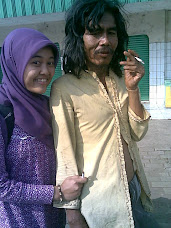.jpg)
Continuum Of Mental Health Concept
Definitions of Mental Health
The dictionary defines health as “the state an organism with respect to functioning, disease, and abnormality at any given time”. Definition vary depending upon whether health is described from a biological, ecological, or sociological point of view. The concept of holistic health, which considers the whole person, both mind and body, is becoming core widely accepted today. The goal of Dunn’s to health care, high-level wellness (discussed below), is to maximize the individual’s potential by maintaining balance and purpose within his or her environment.
The World Health Organization (WHO) defines health as a state of complete physical, mental, and social wellness, not merely the absence of disease or infirmity. This definition emphasizes health as a positive state of well-being, not just absence of disease. People in a state of emotional, physical, and social well-being fulfill life responsibilities, function effectively in daily life, and are satisfied with their interpersonal relationship and themselves.
No single, universal definition of mental health exists. Generally a person’s behavior can provide clues to his or her mental health. Because each person can have a different view or interpretation of behavior (depending on his or her values and beliefs), the determination of mental health may be difficult. In most cases, mental health is a state emotional, psychological, and social wellness evidenced by satisfying interpersonal relationships, effective behavior and coping, positive self-concept, and emotional stability.
These factors constantly interact; thus, a person’s mental health is a dynamic or ever-changing state.
Factors influencing a person’s mental health can be categorized as individual, interpersonal, and social/cultural. Individual factors include a person’s biologic make up, sense of harmony in life, vitality, ability to find meaning in life, emotional resilience or hardiness, spirituality and positive identity (Seaward, 1997). Interpersonal factors include effective communication , ability to help others, intimacy, and a balance of separateness and connection. Social / cultural factors include a sense of community, access to adequate resources, intolerance of violence, and support of diversity among people.
These are some of unique problems relating to the mental health of older adults:
· Multiple pathologies (co morbidity)
· Atypical or nonspecific presentation of illness
· Delay in reporting problems
· Under reporting of symptoms
· Poly pharmacy
Mental Illness
The American Psychiatric Association (APA, 2000) defines a mental disorder as “a clinically significant behavioral or psychological syndrome or pattern that occurs in an individual and that is associated with present distress (e.g., a painful symptom) or disability (i.e., impairment in one or more important areas of functioning) or with a significantly increased risk or suffering death, pain, disability, or an important loss of freedom” (p.xxxi). General criteria to diagnose mental disorders include dissatisfaction with one’s characteristics, abilities, and accomplishments; ineffective or non satisfying relationships; dissatisfaction with one’s place in the world, ineffective coping with life events; and lack of personal growth. In addition, the person’s behavior must not be culturally expected or sanctioned, nor does deviant behavior necessarily indicate a mental disorder (APA, 2000).
Factors contributing to mental illness also can be viewed within individual, interpersonal, and social / cultural categories. Individual factors include biologic make up, anxiety, worries and fears, a sense of disharmony in life, and a loss of meaning in one’s life (Seaward, 1997). Interpersonal factors include ineffective communication, excessive dependency or withdrawal from relationships, and loss of emotional control. Social and cultural factors include lack of resources, violence, homelessness, poverty, and discrimination such as racism, class ism, ageism, and sexism.
CONCEPTS OF MENTAL HEALTH AND MENTAL ILLNESS
A helpful approach in defining mental illness and mental health is based on evaluating individual behavior in two dimensions:
- On a continuum from adaptive to maladaptive
- On a continuum from constructive to destructive
Along the adaptive-maladaptive continuum, behaviors are assessed to the degree that they contribute to or are detrimental to the individual’s pscychological well-being. Maladaptive behavior allows a problem, interfering significantly-often over an extended period of time –with an individual’s ability to function in such important areas of life as health, work, love, and interpersonal relationships. On other hand, adaptive behavior solves problems in living and enhances an individual’s life.
| MENTAL HEALTH VERSUS MENTAL ILLNESS | |
| SIGNS OF MENTAL HEALTH | SIGNS OF MENTAL ILLNESS |
| 1. Happiness a. Finds life enjoyable. b. Can see in objects, people, and activities their possibilities for meeting one’s need. 2. Contol Over Behavior a. Can recognize and act on cues to acisting limits. b. Can respond to the rules, routines, and customs of any group to wich one belongs. 3. Appraisal of Reality a. Accurate picture of what is happening around one. b. Good sense of the consequences both good and bad, that will follow one’s act. c. Can see the difference between the “as if” an “for real” in situations. 4. Effectiveness in Work a. Within limits set by abilities, can do well in tasks attempted. b. When meeting mid failure, persist until determines wethers or not one can do the job. 5. A Healthy Self-Concept a. Sees self as approaching one’s ideals, as capable of meeting demands. b. Reasonable degree of self-confidence helps in being resourceful under stress. | 1. Mayor Depressive Episode a. Loss of interest or pleasure in all or almost all usual activities and pastimes. b. Mood as described by person is depressed, sad, hopeless, discouraged. “down in the dumps”. 2. Control Disorder Undersocialized, Aggressive a. A repetitive and persistent pattern of aggressive conduct in wich the basic rights of others are violated. 3. Schizophrenic Disorder a. Bizarre delusions, such as delusions of being controlled. b. Auditory hallucinations. c. Delusions with persecutory or jealous content. 4. Adjustment Disorder with Work (or Academic) Inhibition a. Inhibition in work or academic functioning where previously there was adequate performance. 5. Dependent Personality Disorder a. Passively allows others to assume responsibility for major areas of life because of inability to function independently. b. Lacks self-confidence, e.g., sees self as helpless, stupid. |
Regarding the second dimension, behavior along the constructive-desctructive continuum often affects others as much as the individual. Destructive behavior not only results in failure to deal with a problem- and thus is maladaptive-but also undermines or destroys the pscychological and often biological well-being of the individual and others. Such behavior- wether it occurs once or repeatedly – may seriously undermine health, significantly increase chances of (actually bring about) death, or drastically affect pscychological functioning individual or others. On the other hand, contructive behavior contributes to psychological growth and biological well-bring. It improves the health and positively influences the pscychological functioning of the individual and others.
Criteria of Mental Health
Mental health has many components, and a wide variety of factor influence it (Mohr, 2003):
1. Autonomy and Independence: The persons can look within for guiding values and rules by which to live. He or she considers the opinions and wishes of others but does not allow them to dictate decisions and behavior. The persons who autonomous and independent can work interdependently or cooperatively with others without losing his or her autonomy.
2. Maximization of one’s potential: The person is oriented toward growth and self-actualization. He or she is not content with the status quo and continually strives to grow as a person.
3. Tolerance of life’s uncertainties : The person can face the challenges of day-to-dayliving with hope and a positive outlook despite not knowing what lies ahead.
4. Self-esteem: The person has a realistic awarness of his or her abilities and limitations.
5. Mastery of the environment: The person can deal with and influence the environment in a capable, competent, and creative manner.
6. Reality orientation: The person can distinguish the real world from a dream, fact from fantasy, and act accordingly.
7. Stress management: The person can tolerate life stresses, appropriately handle anxiety or grief, and experience failure without devastation. He or she uses support from family and friends to cope with crises, knowing that the stress will not last forever.
Range of Mental Health
1. Dynamic rather than static point
Definitions of health are attempts to differentiate between illness and wellness. The usual view of illness as the opposite of wellness provides no range or scale of difference on degree upon wich to measure client behaviors. Dunn revised the view of illness and wellness as two separate entities and placed them on graduated scale or health axis. The degree of illness or wellness is modified by environmental factors
2. The range starts from optimal health - dies
In placing illness and wellness on graduated scale, Dunn retains the idea of wellness as the opposite of illness but extends the definition to include a range of condition which fall between the extremes of death or serious illness and health, or peak wellness. At the same time he recognizes that the degree of illness or wellness is influenced by the environment
3. There are stages
4. Individual variation
5. Describes the ability of adaptation
6. Function effectively: a healthy “High level wellness for the individual is defined as an integrated method of functioning which is oriented toward maximizing the potential of which the individual maintain a continuum of balance an puposeful direction within the environment where he is functioning”.
Nursing is concerned not only with the prevention of disease or illness buth with the promotion of wellness or healthy behavior. When nurses define wellness for clients and families, these definition become criteria for assessing client systems, recognizing needs, and selecting interventions. Behaviors associated with wellness are supported and encouraged. Behaviors associated with illness require interventions to decrease the discomfort, remove or reduce the stress, and work toward ways of functioning which are apropriate for the client.
References:
Videbeck, Sheila L. 2004. Pscychiatric Mental Health Nursing Second Edition. Philadelphia: Lippincott Williams & Wilkins.
Varcarolis, Elizabeth M. 1994. Foundations of pschyatric mental health nursing second edition. Philadelphia, Pennsylvania: W. B. Saunders Company.
Haber, Judith, dkk. 1982. Comprehensive Psychiatric Nursing Second edition. USA: Mc Graw – Hill, Inc.
Hogstel, Mildred O. 1995. Geropsychiatric nursing second edition. USA: Mosby – Year book, Inc.
Yosep, Iyus. 2009. Keperawatan Jiwa (Edisi Revisi). Bandung: PT Refika Aditama.





.jpg)




